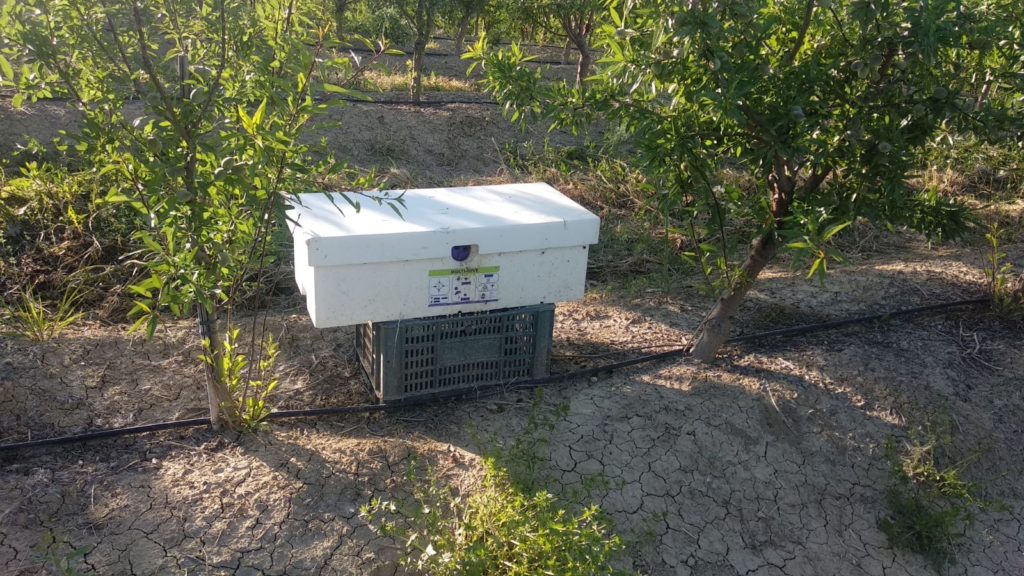
Feb 11, 2021Optimizing almond pollination at challenging time of year
Pollination conditions when almond trees are in bloom can be far from ideal, however, Biobest has some suggestions.
Now we are in mid-winter, most trees have lost their leaves and are waiting for springtime to show new signs of growth. However, some species of fruit trees are almost in bloom – as is the case with almond trees.
Challenging pollination weather
“At this crucial time of year, the weather can prove a major challenge to the pollination of almond trees,” says Miguel Claros – Technical Sales Representative for Biobest Spain. “Many popular commercial almond varieties bloom in mid-February. While the frost risk is very high, days are often cloudy, wet and windy. Added to this, the blossom usually lasts for just two weeks. “Faced with these difficulties, traditional almond tree pollinators – bees – can struggle to complete pollination during this short window of opportunity.”
Bumblebees to the rescue
At a time when bees cannot provide adequate levels of pollination, bumblebees can now take over.
“Hard-working and tireless relatives of bees, bumblebees are capable of visiting more flowers and for longer,” explains Miguel. “However, without a doubt, their best quality is that they work regardless of weather conditions.
“Bumblebees can work at temperatures as low as 10˚ C. By vibrating their bodies, they generate heat and are not intimidated by the wind – this makes them an excellent helper team in addition to bees.”
Multi-Hives provide comfort
“Biobest has always placed great value on the work of pollinating insects, as they are a fundamental pillar in human nutrition, and must be treated as such,” says Miguel.
“Biobest’s Multi-Hives combine experience and innovation in pollination. With three hives grouped together, the heat generated by each colony is shared – helping the bumblebees combat any inclement weather conditions.
“In addition, the weather resistant box is robust and provides valuable insulation from the cold – providing our bumblebees with a comfortable home.”
Good teamwork
In summary, Miguel says: “Biobest’s Multi-Hives provide almond growers with a reliable means to meet their pollination needs. Helping overcome the short and intense flowering period – as well as cold, rainy or windy weather – the bumblebees are hard at work helping to optimise pollination of the crop at a time when bees generally struggle.
“Together, bees and bumblebees can ensure an optimal almond harvest – of great quality and size – in a natural and sustainable way.”









